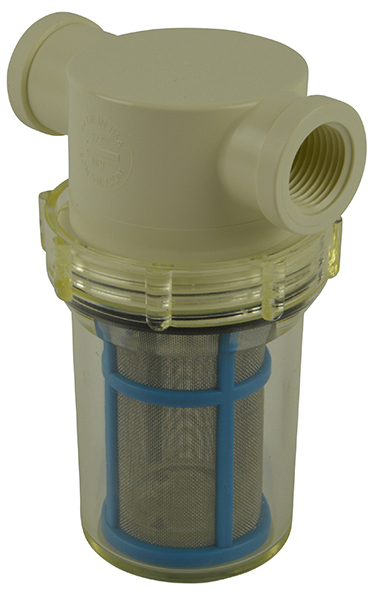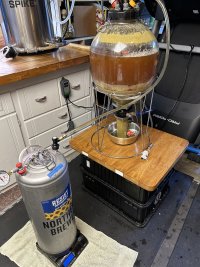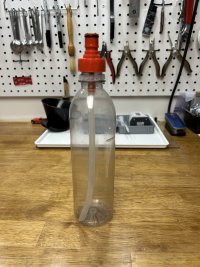You are using an out of date browser. It may not display this or other websites correctly.
You should upgrade or use an alternative browser.
You should upgrade or use an alternative browser.
poll - how do you transfer your beer?
- Thread starter fluketamer
- Start date

Help Support Homebrew Talk:
This site may earn a commission from merchant affiliate
links, including eBay, Amazon, and others.
- Joined
- Mar 12, 2021
- Messages
- 198
- Reaction score
- 584
I purge my transfer hose/tubing w/ co2 before starting transfer. Use co2 pressure to force beer from Fermzilla via floating dip tube. Works for me.Floating dip tube through closed transfer to a keg purged by fermentation, same as @Bassman2003 and @homebeerbrewer. From a Fermzilla mostly for me. I could never get over the fact that at least some air would get trapped in the hose/spigot at that connection point. As soon as you open the spigot that air goes up, right through your beer. Not sure how much is in my mind but definitely noticed an improvement moving to this method.
Closed loop gravity/low pressure transfer into a purged keg. Brand new to this (I've done 3) but I will never do it another way again. I noticed a marked difference in the first one which is currently on tap.
- Joined
- Mar 12, 2021
- Messages
- 198
- Reaction score
- 584
I have been doing oxygen free transfers for quite a while. I wouldn't do it any other way. I also use a scale to help monitor progress. I put the clean and sanitized keg in the fridge or kegerator the day before so its cold, I pre-crash the beer in the fermenter. Saves my kegerator from working to get it cold. I use low pressure co2 to push the beer out of my Fermzilla, I also put a gauge on the "out" post of the receiving keg so I know when to pull the PRV to get things moving again. Another thing I do is inject finings (gelatin and or Biofine Clear) mid-transfer oxygen free. I use a 500ml SmartWater bottle with a piece of EvaBarrier tubing on the stem of a carb cap long enough to reach the bottom. I purge the bottle with co2, then pressurize > the receiving keg, make sure you purge the jumper hose so you don't inject oxygen. Then viola. Afterwards I put the transfer hose back on and finish the transfer.
Attachments

$159.50 ($26.58 / Count)
3M High Flow Series System BREW120-MS, 5616001, For Brewed Coffee and Hot Tea, Valve-in-Head Design
Amazon.com
![Craft A Brew - Safale S-04 Dry Yeast - Fermentis - English Ale Dry Yeast - For English and American Ales and Hard Apple Ciders - Ingredients for Home Brewing - Beer Making Supplies - [1 Pack]](https://m.media-amazon.com/images/I/41fVGNh6JfL._SL500_.jpg)
$6.95 ($17.38 / Ounce)
$7.47 ($18.68 / Ounce)
Craft A Brew - Safale S-04 Dry Yeast - Fermentis - English Ale Dry Yeast - For English and American Ales and Hard Apple Ciders - Ingredients for Home Brewing - Beer Making Supplies - [1 Pack]
Hobby Homebrew

$58.16
HUIZHUGS Brewing Equipment Keg Ball Lock Faucet 30cm Reinforced Silicone Hose Secondary Fermentation Homebrew Kegging Brewing Equipment
xiangshuizhenzhanglingfengshop

$44.99
$49.95
Craft A Brew - Mead Making Kit – Reusable Make Your Own Mead Kit – Yields 1 Gallon of Mead
Craft a Brew

$22.00 ($623.23 / Ounce)
AMZLMPKNTW Ball Lock Sample Faucet 30cm Reinforced Silicone Hose Secondary Fermentation Homebrew Kegging joyful
无为中南商贸有限公司

$76.92 ($2,179.04 / Ounce)
Brewing accessories 1.5" Tri Clamp to Ball Lock Post Liquid Gas Homebrew Kegging Fermentation Parts Brewer Hardware SUS304 Brewing accessories(Gas Hose Barb)
chuhanhandianzishangwu

$53.24
1pc Hose Barb/MFL 1.5" Tri Clamp to Ball Lock Post Liquid Gas Homebrew Kegging Fermentation Parts Brewer Hardware SUS304(Liquid Hose Barb)
yunchengshiyanhuqucuichendianzishangwuyouxiangongsi

$719.00
$799.00
EdgeStar KC2000TWIN Full Size Dual Tap Kegerator & Draft Beer Dispenser - Black
Amazon.com

$20.94
$29.99
The Brew Your Own Big Book of Clone Recipes: Featuring 300 Homebrew Recipes from Your Favorite Breweries
Amazon.com

$53.24
1pc Hose Barb/MFL 1.5" Tri Clamp to Ball Lock Post Liquid Gas Homebrew Kegging Fermentation Parts Brewer Hardware SUS304(Liquid Hose Barb)
Guangshui Weilu You Trading Co., Ltd

$176.97
1pc Commercial Keg Manifold 2" Tri Clamp,Ball Lock Tapping Head,Pressure Gauge/Adjustable PRV for Kegging,Fermentation Control
hanhanbaihuoxiaoshoudian

$479.00
$559.00
EdgeStar KC1000SS Craft Brew Kegerator for 1/6 Barrel and Cornelius Kegs
Amazon.com

$33.99 ($17.00 / Count)
$41.99 ($21.00 / Count)
2 Pack 1 Gallon Large Fermentation Jars with 3 Airlocks and 2 SCREW Lids(100% Airtight Heavy Duty Lid w Silicone) - Wide Mouth Glass Jars w Scale Mark - Pickle Jars for Sauerkraut, Sourdough Starter
Qianfenie Direct

$7.79 ($7.79 / Count)
Craft A Brew - LalBrew Voss™ - Kveik Ale Yeast - For Craft Lagers - Ingredients for Home Brewing - Beer Making Supplies - (1 Pack)
Craft a Brew

$10.99 ($31.16 / Ounce)
Hornindal Kveik Yeast for Homebrewing - Mead, Cider, Wine, Beer - 10g Packet - Saccharomyces Cerevisiae - Sold by Shadowhive.com
Shadowhive
I'll be honest, I use a conical because I save the yeast but I just attach a hose to the fermenter valve that reaches the bottom of the keg, I put a clean sanitized towel over the opening and just transfer open then in the keg do the pressure pull on gas several times when full, never had a problem
I'm guessing highly-hopped beers like neipas are not in your repertoire?
Cheers!
Cheers!
Not a hop crazy guy, I'm more into lets say anything amber or darkI'm guessing highly-hopped beers like neipas are not in your repertoire?
Cheers!
moreb33rplz
Well-Known Member
- Joined
- Mar 25, 2014
- Messages
- 685
- Reaction score
- 379
I've been sipping a Neipa I brewed 6 weeks ago and for the first time did a closed transfer from fermenting keg to serving keg after I commando dry hopped 6 oz of nectaron for 6 days. I hate to say it but I think it tastes better than my beers that I didn't transfer and just let the dry hops sit in the beer for the duration of drinking the keg@moreb33rplz Curious on the same. Is there a difference between:
1. No yeast crash, dry hopping commando and never crashing/transferring
And
2. Crashing yeast, dry hopping, crash the hops, transfer
My hypothesis is that with #1, you will be drinking hop matter where #2 it would be none or less hop matter and potentially less astringency/bite.
Good side - beer is f&^#* awesome
Bad Side - the method that takes more effort is better, at least with this sample size of 1
crazyjake19
Well-Known Member
I ferment mostly in 5 gallon PET carboys, and pressure transfer out of them into sanitized and purged corny kegs. I use one of those orange caps to apply CO2 to the carboy at 1psi, stainless racking cane to 3/8" vinyl tubing to a ball lock liquid disconnect, filling keg from the bottom-up.
On certain occasions I'll ferment in a corny keg and transfer out of them via a floating dip tube.
On certain occasions I'll ferment in a corny keg and transfer out of them via a floating dip tube.
fluketamer
Well-Known Member
- Joined
- Dec 1, 2008
- Messages
- 1,957
- Reaction score
- 2,562
i stopped transferring at this point and just serve out of fermenter with floating diptube. when the level gets down to less then a half ill sometimes jump it to a minikeg to free up kegerator space and/or free up fermenters.
I use a vacuum pump. Works great.
Same setup as @bailey mountain brewer I do add an inline filter when transferring heavy dry hopped beers. Thik it is this one from vacmotion:


two flaws???My last fifty ish batches I fermented and serve from the same keg, no transfer. I am still surprised more people don't do this.
The two flaws I see are you can't really harvest the yeast and you have less options for dry hopping but worth it for my brewing. Sue me I think transferring beer is a pain and this method is as low oxygen as it gets
1. harvest yeast...yes you can. very easy. If you start with clean and clear (filtered, screened or settled) wort...meaning NO trub...then you will have a nice clean yeast cake after fermentation. A clean yeast harvest is done when you tap the first pint (standard dip tube), or you tap the last pint (floating dip tube). Option, dump fresh wort into "dirty" keg and re-ferment.
2. dry hopping. do it while yeast is active or at the beginning. Any oxygen introduced will be consumed by the active yeast and/or spunded out.
I bottle straight from the fermenter. One fermenter I have used a spigot, one is a glass carboy (so I use an auto siphon).
In either case, I use a bottling wand with a spring, so it holds the siphon perfectly.
I dose a simple syrup to each bottle with a medicine syringe to carbonate them.
I've gotten pretty good at placing the cap during the foam, but I don't have enough hands to clamp it down in that moment.
In either case, I use a bottling wand with a spring, so it holds the siphon perfectly.
I dose a simple syrup to each bottle with a medicine syringe to carbonate them.
I've gotten pretty good at placing the cap during the foam, but I don't have enough hands to clamp it down in that moment.
Rack to bottling bucket, then fill bottles with a bottling wand.
Similar threads
- Replies
- 2
- Views
- 320
- Replies
- 63
- Views
- 3K
- Replies
- 25
- Views
- 1K
- Replies
- 18
- Views
- 884
- Replies
- 39
- Views
- 3K












































